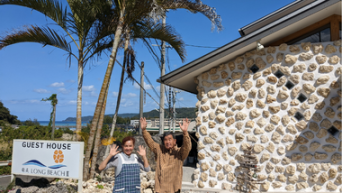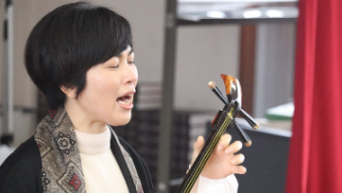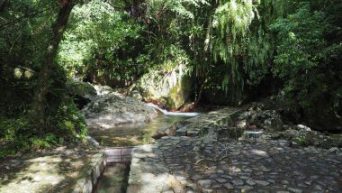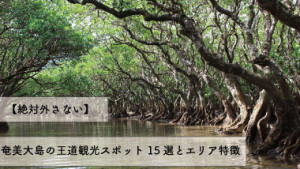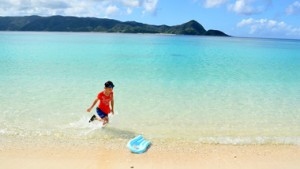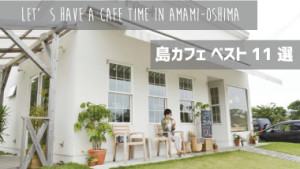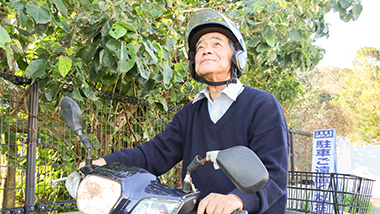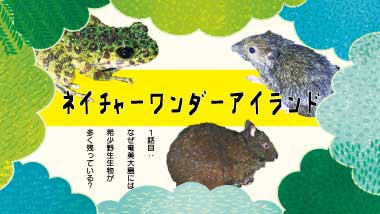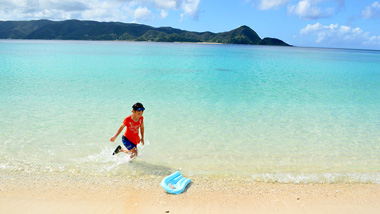What is the Best Season for Visiting Amami? Let’s Ask an Expert!
島コト
2019/01/22
小海ももこ
Surely there are people who have visited Amami with an image of tropical southern islands, but were unexpectedly met with seemingly never-ending cloudy skies.
There are also probably many people who have been told that “the ocean is even prettier when it is sunny” by Amami islanders.
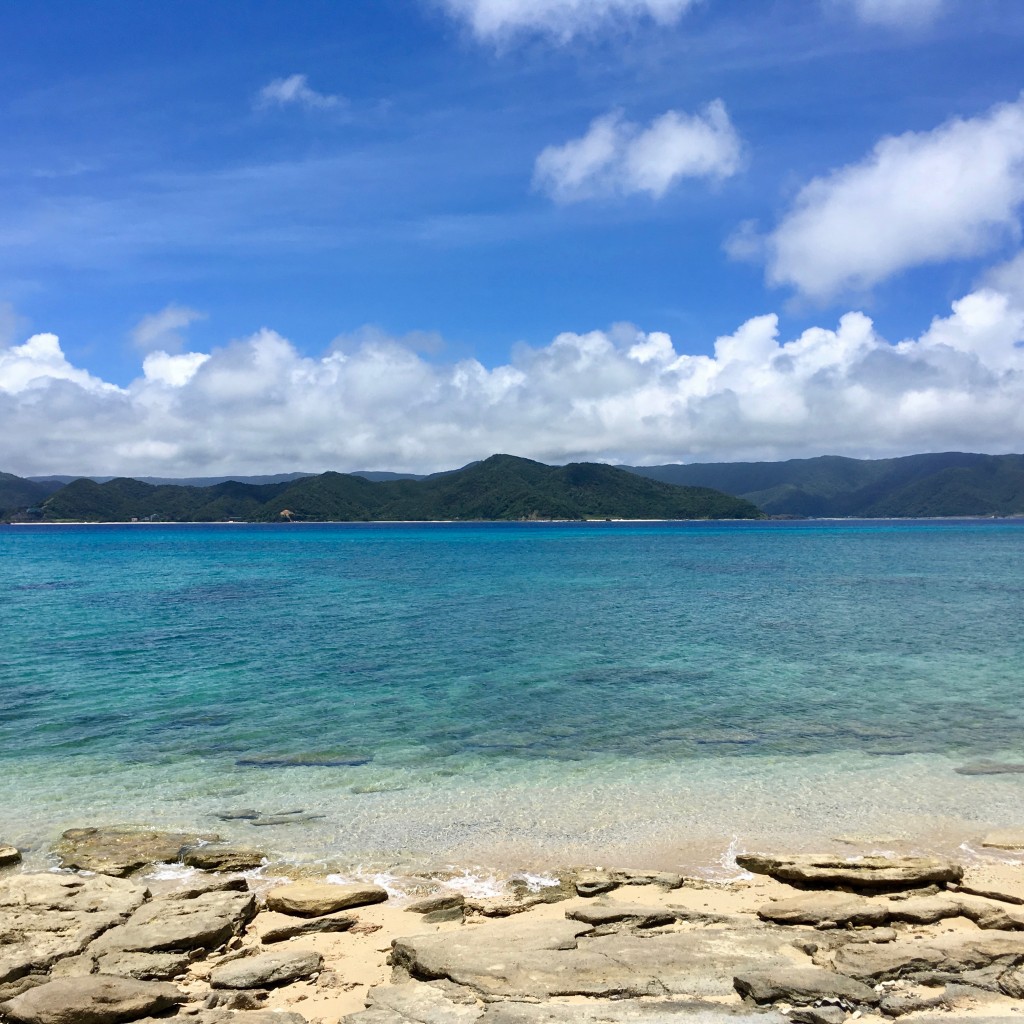
The ocean shines a deep blue hue when it is sunny.
In Japan, Amami Oshima and the islands further south are categorized as ‘subtropical.’
Even within that, Amami has its own special weather patterns and seasonal changes.
In light of this, it is essential that one is familiar with the seasons and weather of Amami in order to more fully enjoy it.
When it comes to the weather, the Japanese Meteorological Agency is the place to go for information. I visited an associated agency called the Naze Weather Measurement Station, and the person who kindly answered my inquiries was forecaster Yasuo Sasaki.
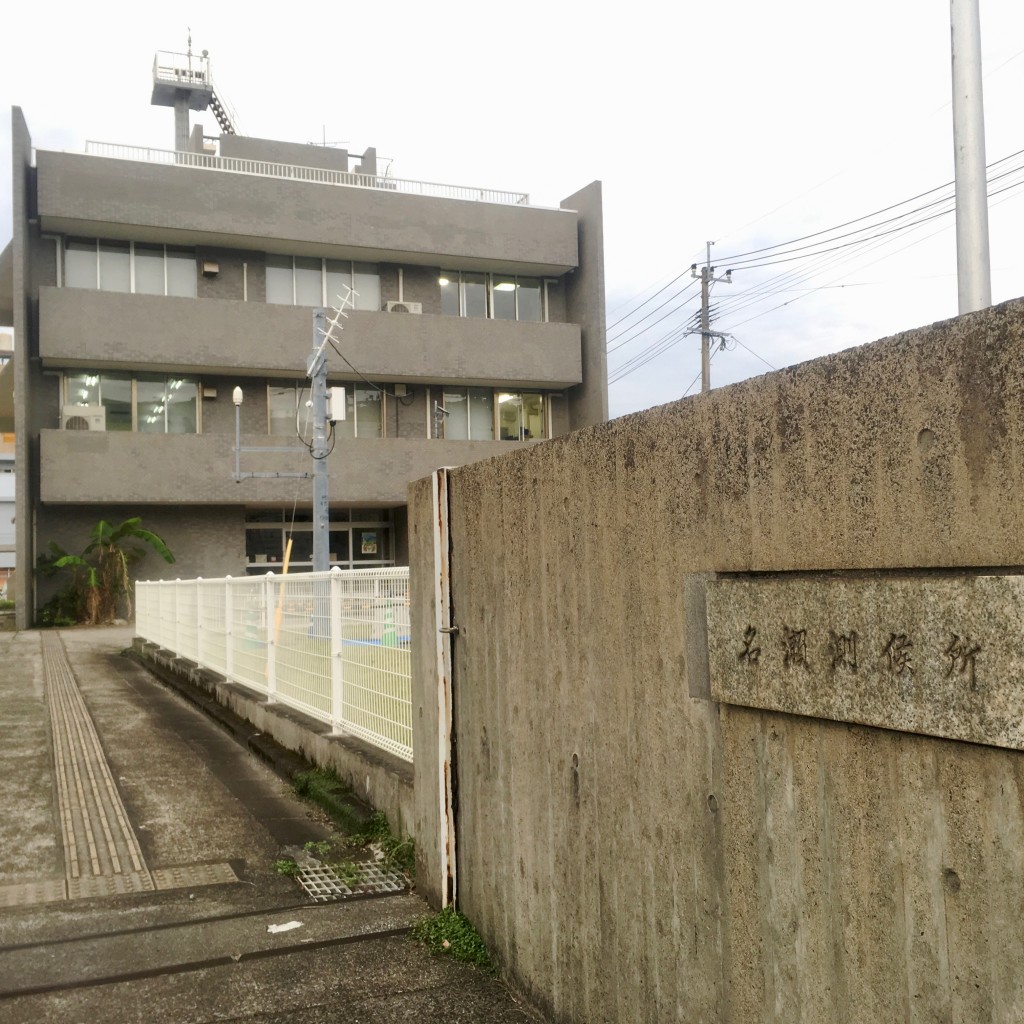
The weather measurement station is a part of the (Japanese) Meteorological Agency that issues weather observations, advisories, as well as warnings.
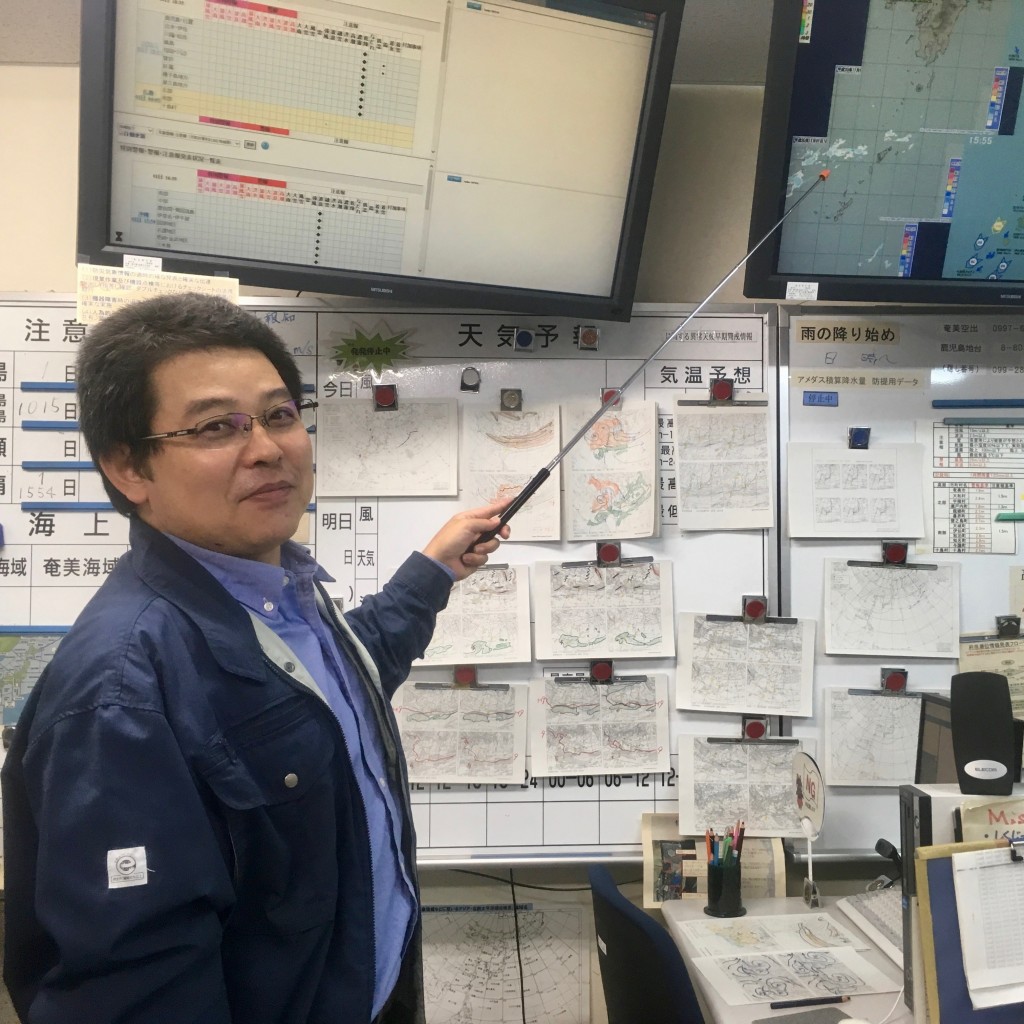
Mr. Yasuo Sasaki answered my inquiries.
Q1: What exactly is a ‘subtropical oceanic climate?’
Subtropical areas are located from north latitude 20-30, or in between ‘tropical’ and ‘temperate’ zones.
It is defined by the following points, among others:
- Summer is hot, and winter does not go below 0 degrees
- The average yearly temperature is over 18℃
Also, in contrast with continental climates that experience sharp differences in temperatures, oceanic climates experience smaller differences in seasonal temperature. Oceanic climates are also characterized by high moisture because of the ocean, so these regions do not get either too hot or too cold.
They never get as cold as 0℃, and there are few days that are hotter than 35℃. There are more days that are hotter than 35℃ on the mainland of Japan in comparison.
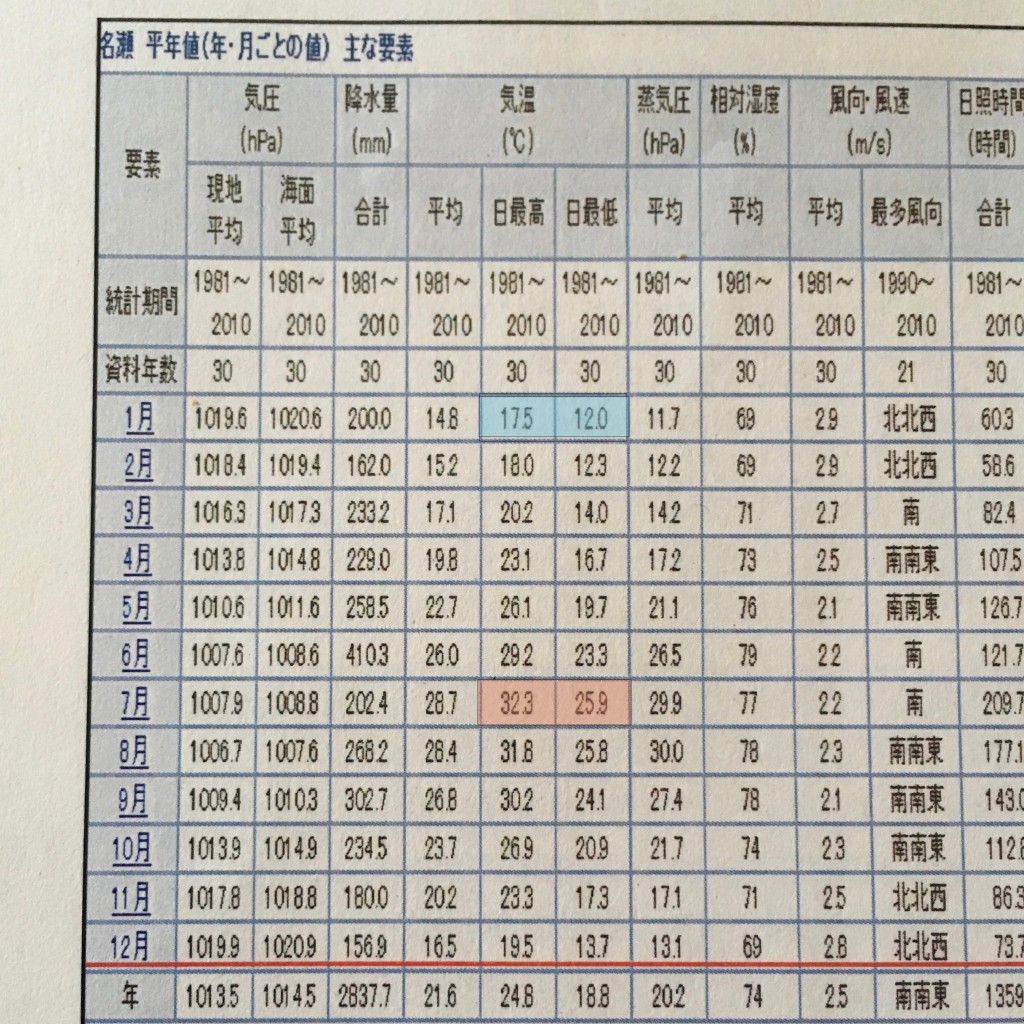
January is the coldest month (in blue), and July is the warmest month (in red).
In the coldest month, January, the average highest temperature is 17.5℃, while the lowest average temperature is 12.0℃. Then in the warmest month, July, the highest average temperature is 32.3℃, while the lowest is 25.9℃.
Throughout the year, the average daily maximum temperature is 24.8℃、and the daily minimum temperature is 18.8℃, so there is no drastic difference. (Observed at: Naze, from 1981-2010)
Winter is warm, and summer doesn’t get too hot… isn’t this an ideal climate?!
…which one might say, however, it does not mean everything is ideal. Let’s move on to the next question.
Q2: Is it true that hours of daylight is less on Amami, even by comparison nationally?
There is a rumor that hours of daylight is less on Amami, which has a ‘southern islands’ image and where the sunlight is stronger.
If you look at the yearly average daylight by region, the average being 1359 hours in Naze:
Naha (Okinawa) 1774 hours
Kagoshima 1935 hours
Fukuoka 1867 hours
Osaka 1996 hours
Tokyo 1876 hours
It seems that the daylight is in fact less when compared to other cities in Japan.
Also, in terms of daylight amounts by month (from 1981-2010), in May it is 126.7 hours, and in July it is 209.7 hours, while in February it is 58.6 hours. This shows the extreme decrease in daylight during wintertime.
According to Mr. Sasaki, “[in winter] the winter pressure pattern forms, where cold air blows over the warm ocean water of the East China Sea, which creates low clouds. These low clouds are pushed over the Amami region by seasonal winds from the north, which obstructs the sunlight, making the daylight time shorter compared to other seasons.
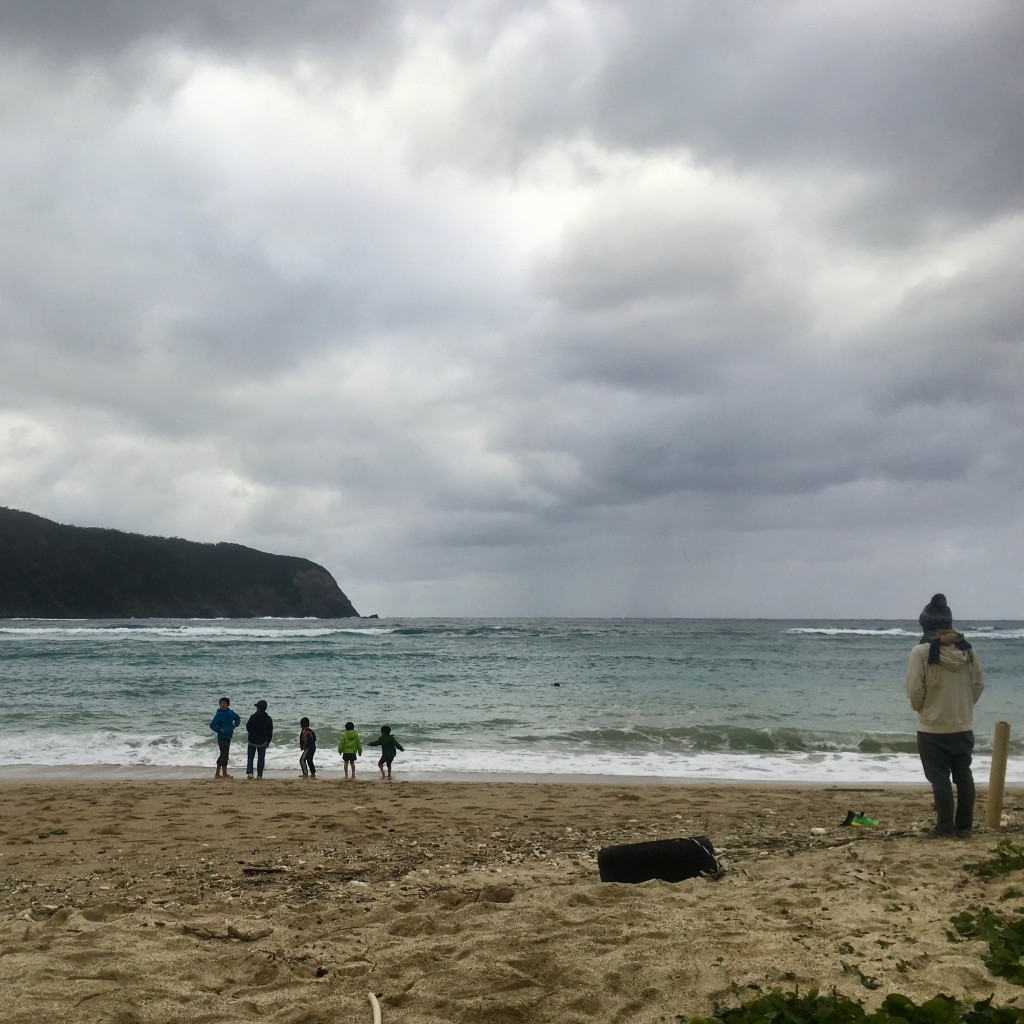
Dull skies such as this one become more frequent in the wintertime.
Q3: I’m sure the monsoon season is severe, but how is it compared to other regions?
There is definitely a large amount of precipitation, with June (in monsoon season) and September (typhoon season) having the most rainfall by far. In June, moist air from the south rolls in more easily, and it is more prone to stagnation at the end of the monsoon season, thus causing these high amounts of rainfall. The raindrops are apparently also twice the size of those in the mainland!
Okinawa is also technically a subtropical oceanic climate, but since the monsoon season is slightly shorter, there is little impact from weather fronts and typhoons, and there is less rain during winter, the average precipitation is less.
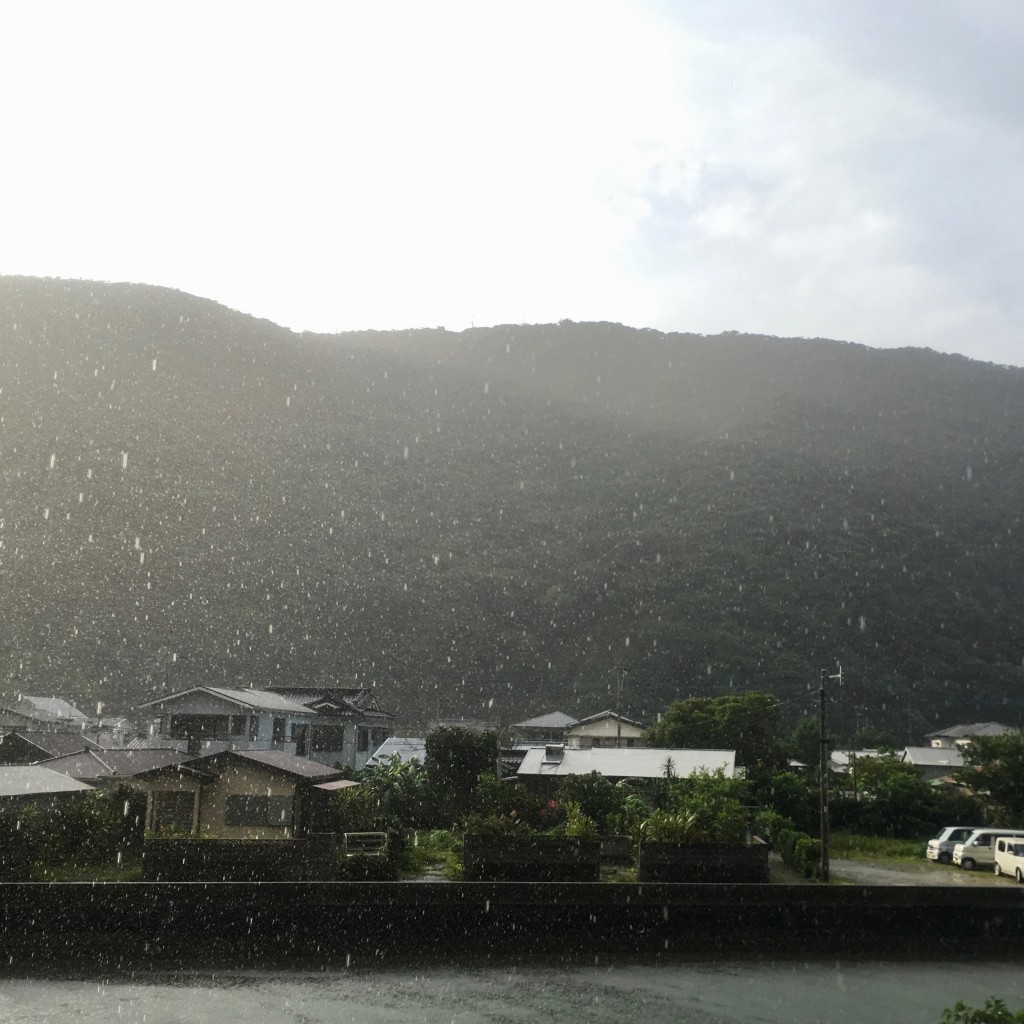
The rooftops make a drip drop sound when it rains.
The average temperature of Amami in June was as high as 26.0 ° C (21 ° C in Tokyo).
The ocean becomes a source of supply and the air contains a high amount of water vapor, so the humidity level is 10% higher than in Tokyo or Osaka.
The ‘discomfort index’ that indicates humidity is derived from how high the temperature and moisture level is, so some may be left with a vivid impression from the hot and humid weather of the monsoon season.
Q4: If there are any weather circumstances specific to Amami, please let me know.
Since the epicenter of typhoons are clearly formed, when Amami enters the center, the weather suddenly clears up. By the time typhoons hit the mainland the epicenter has spread too wide so it often collapses.
There are definitely times during a typhoon when the wind suddenly stops, and if you go outside you can see the stars in the night sky.
I mentioned that it seems like there are more rainbows on Amami, and this was met with the answer: “that is due to the fact that sudden rain showers are common.”
I’m sure there are many people who have experienced a day when it seems sunny but then it suddenly begins to rain. At times like that, try looking around. There may be a beautiful rainbow by the mountains or over the ocean.
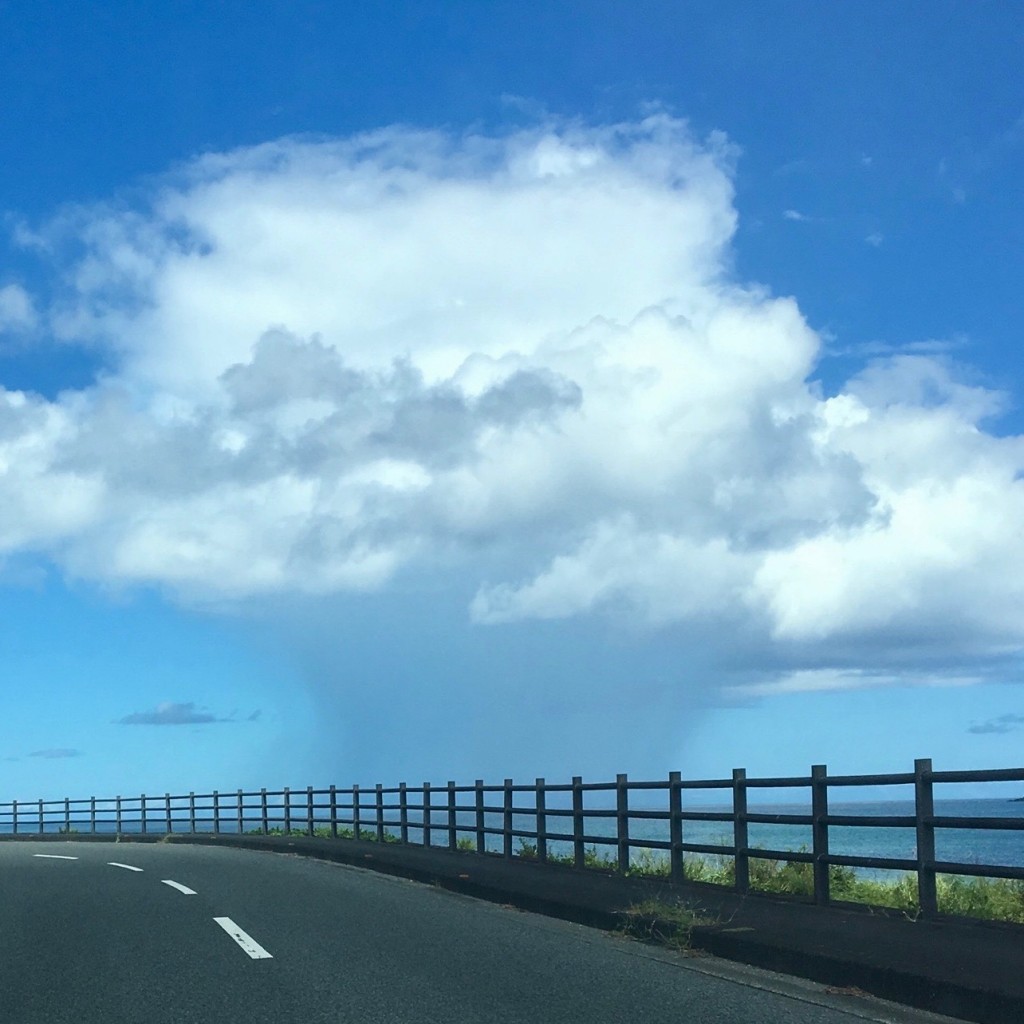
A curtain of rain approaches from across the ocean.
Q5: When do you think the best season to visit Amami is?
Mr. Sasaki thinks that the best time to visit Amami is during spring or autumn, when it is neither too hot, nor too cold. Although these are short periods of time, it is from March to April, as well as from October to November.
Also, the best time to visit changes depending on the purpose of the trip. If the purpose is to swim in the ocean, then from July to September is best; if the purpose is to view the traditional events in the autumn, then September to October is best; for whale-watching, December to March is best.
By the way, there are no Japanese cedar trees on Amami, so for those who get hay fever, it may be good to visit the island during the spring to relieve some of those symptoms.
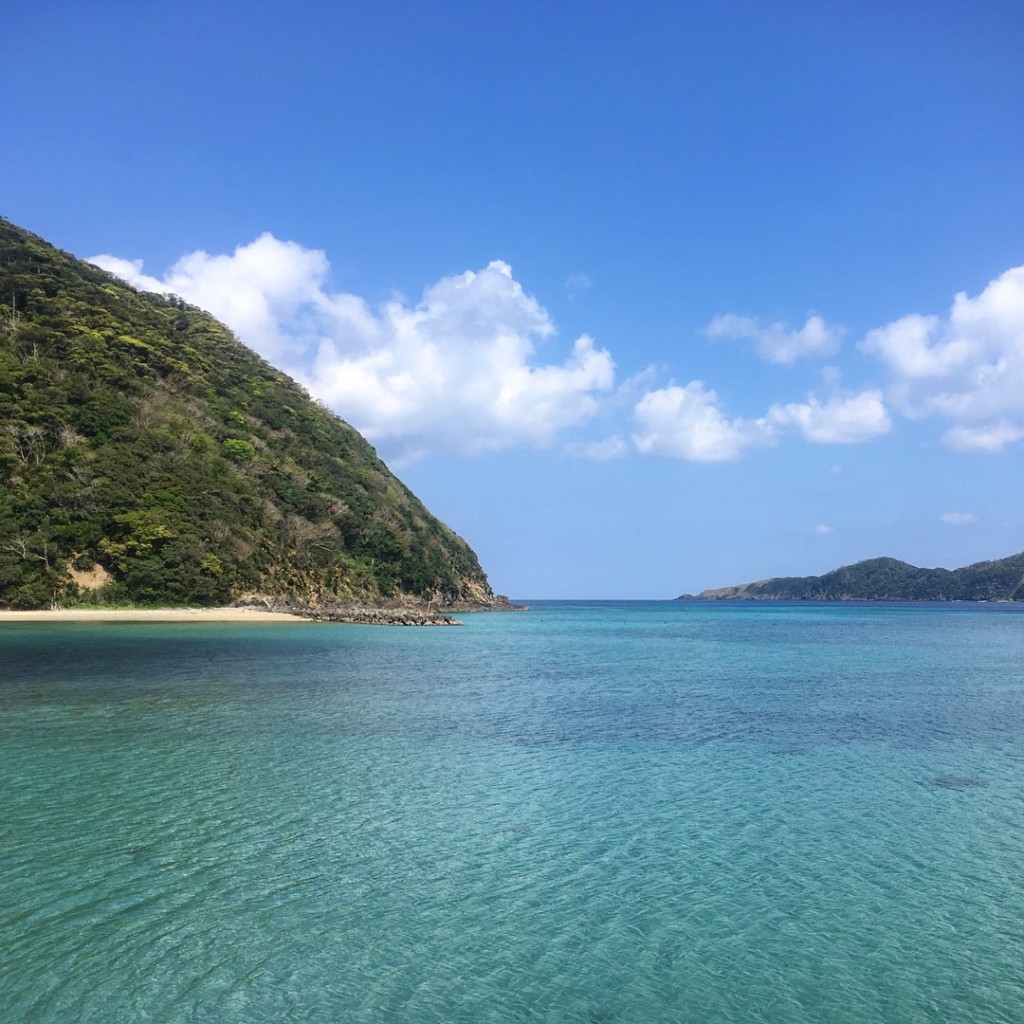
The young leaves are enchanting and the waves are gentle in March and April.
I hope this has helped make the weather of Amami more easily understood.
Each of the four seasons have good points, and there are various ways to enjoy them. I think that it is best for people to choose to visit during a season that best fits the purpose of their trip.
I was able to learn about the weather of Amami, and even about the ocean and wind surrounding the island. Many thanks to Mr. Sasaki of the Naze Weather Measurement Station.
*origninal article: https://www.amami-tourism.org/10708/*
この記事を書いたフォトライター
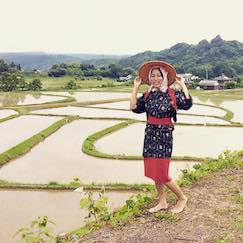
小海ももこ
新潟県十日町市生まれ。地方紙記者、農業、バックパッカーなどを経て、旅行雑誌や旅ガイドシリーズの編集に携わる。同時に、野外フェスの企画運営や、NPO法人で海外教育支援、震災復興支援を行う。2016年4月から奄美大島に移住。大和村地域おこし協力隊に就任。
